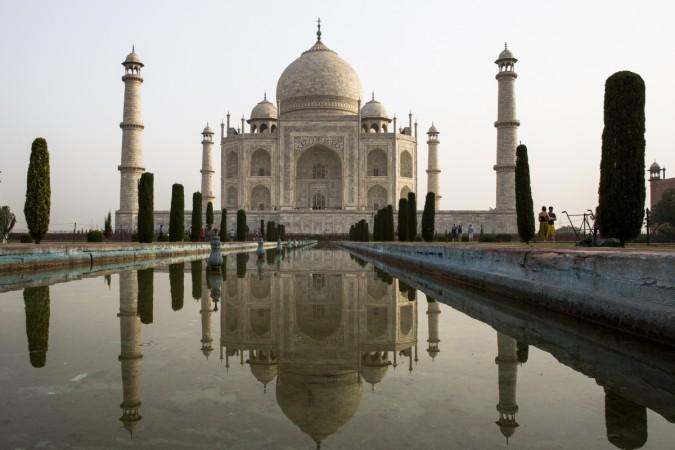
The 17th-century spectacular white marble building Taj Mahal in Agra, India, is a symbol of eternal love and passion. The UNESCO World Heritage site was built by Mughal emperor Shah Jahan in memory of his beloved wife Mumtaz Mahal.
It took 17 years (from 1631 to 1648 AD) to build the beautiful Taj Mahal, which has now become a symbol of love. The queen passed away in 1631 after giving birth to her 14th child and in her memory, Shah Jahan built the beautiful Taj Mahal, which is now considered as one of the wonders of the world.
While all might know the story behind the Taj Mahal, there are some interesting things about the World Heritage site that is known only to a few people. Here are some lesser-known and interesting facts about one of the beautiful monuments of love in India.
Taj Mahal was made using 28 precious and semi-precious stones
The magnificent monument was made using 28 precious and semi-precious stones brought from different places in India, Ceylon and Afghanistan. Jasper stone was from Punjab, jade and crystal were brought from China, turquoise from Tibet, lapis lazuli and sapphire from Arabia and diamonds from Panna. The white marble dominantly used to make the monument was from Makrana in Rajasthan.


Arms of the artisans were not cut after the completion of Taj Mahal
There is a popular myth that Shah Jahan ordered to cut the arms of the chief artisans and make them blind so they would not create similar monuments. However, many historians find the story baseless, as there is no records or evidence that claims the arms of the craftsmen were chopped and their eyes were taken out.
Taj Mahal was sold thrice
The UNESCO World Heritage site was sold not once but thrice. Yes, that's true. The notorious con man Natwarlal, who was also a lawyer, sold the national monument to tourists thrice for just a few lakhs.

Noted magician PC Sorcar Junior made Taj Mahal "Vanish"
In November 2000, the well-known magician PC Sorcar Junior made it "vanish." He performed a magic and manage to vanish the magnificent monument in thin air, but it reappeared after two minutes.
"No it was not mass hypnotism," Sorcar told Press Trust of India in 2000. "On the contrary, it was a case of application of `Adrishya (disappearance) rasa' to the science of magic."
"I just kept the Taj away from your eyes. It was a perfect illusion," the magician said.

Mud therapy for Taj Mahal
In April 2017, the government told the Rajya Sabha members that a kind of mud therapy is being used on the monument, as the white marble is changing colour.
"The conservation work on three minarets out of four have been completed. This work will only after completion of the forth minaret. At present, therapy on the facade in going on. We will try and start the work by April next year," a senior ASI official told The Times of India.










